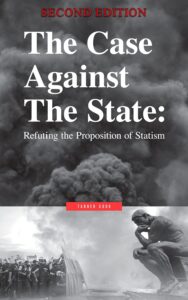The political landscape has long been divided into the left and right spectrum by design. This is a deeply ingrained paradigm that shapes our understanding of politics, dictating the narrative of political discourse. But, this division is increasingly failing us. The black-and-white depiction of left vs right is proving to be oversimplified and insufficient in addressing the multifaceted nature of modern political issues.
An Overview of the Left Vs Right Political Spectrum
The concept of the left vs right political spectrum dates back to the time of the French Revolution and forms the bedrock of our political understanding. Generally, left-leaning ideologies champion social equality and progressive changes. On the other hand, right-wing ideologies typically uphold traditional values and hierarchical systems.
This two-fold categorization, however, appears to be losing its efficacy. As the complexity of political beliefs broadens, the binary left-right model falls short of encapsulating the myriad of political ideologies present in today’s society. Consequently, our traditional understanding of the political spectrum as just left or right, seems to be becoming progressively deficient and divisive in effectively representing the diversity of modern political thought.
The Reduction of Complex Political Beliefs
Picture a wide spectrum of colors, then imagine being told to categorize them all as either black or white. It sounds absurd, right? That’s essentially what the left vs right political paradigm tries to do to our political beliefs. By attempting to divide ideologies into two diametrically opposed camps, we ignore the vast gradient of political thoughts and convictions that exist between these poles. This reductionist view overlooks the fact that one’s political perspective isn’t strictly confined to left or right, but can also blend elements of both.
The political inclination of a person might lean conservative on fiscal issues, yet liberal on social matters, or vice versa. In shoehorning complex ideologies into a binary model, we risk skewing the true representation of public sentiment, with the vibrancy of diverse political colors being crammed into a monochrome model. The result is a distorted image of political ideology that lacks the detail and nuance of the full-color original. This oversimplified approach leaves little room for the complexities of modern political ideologies, reducing them to mere shadows of their true selves.
Polarization and the Loss of Political Nuance
Polarization is a dangerous side effect birthed from the left vs right model’s oversimplified outlook. It creates a landscape of intense divide, setting up two camps perceived to be innately at odds with each other. This harsh division brews hostility and often extinguishes the opportunity for political subtlety, mutual understanding, and bipartisanship. A political tug of war ensues, fostering an “us against them” mindset, which erodes the middle ground, making collaborative and constructive political conversations seem almost impossible.
This dichotomy encourages the extremities at both ends of the spectrum, thereby leaving little room for moderate ideologies. Such a landscape breeds the dismissal of nuanced positions and enforces a binary choice. The fine lines and gradations in political thought are lost, replaced with an overemphasis on stark contrasts. This phenomenon can lead to the growth of extremist views while drowning out balanced perspectives and productive dialogue.
In such an environment, the possibility for intricate discourse becomes limited. Instead of engaging in productive debates that encourage growth and progress, the narrative becomes dominated by conflict, rivalry, and extremism. Political nuances are overlooked and even dismissed, leaving behind a polarized society that struggles to find common ground. It’s time we recognize this glaring flaw in the left vs right political paradigm and seek solutions that encourage a more nuanced and comprehensive approach to political discourse.

> Check Current Book Prices <
The Marginalization of Radical Views
Imagine a world where out-of-the-box thinking and innovation are suppressed in favor of the norm. That’s essentially the landscape the left vs right political model creates, inadvertently pushing radical views to the outskirts of political discourse. By sticking to this rigid paradigm, we often label these perspectives as extreme or impractical, thus excluding them from mainstream political conversations.
Unfortunately, the binary model tends to put a straitjacket on the spectrum of political debate, snuffing out the flame of transformative change. It’s like refusing to turn the dial on a radio, sticking only to a couple of familiar stations and missing out on a world of different music. This is not to suggest that all radical views are inherently beneficial or viable.
But isn’t it worth letting them have a voice in the discussion? After all, dismissing radical views outright could mean missing the next big idea or solution to a pressing political issue. The left vs right paradigm’s propensity to marginalize these views only underscores its limitations in the face of our diverse and evolving political landscape.

The Failure to Address Cross-Cutting Issues
Just as a one-size-fits-all shirt fails to fit everyone perfectly, the left vs right political framework also struggles to tackle issues that don’t conveniently align with its binary categorization. Take issues like climate change, income inequality, and systemic racism, for instance. These topics don’t just sit on one side of the spectrum or the other.
Instead, they crisscross the political divide, weaving intricate patterns that cannot be untangled using an overly simplified framework. Our political system needs to be capable of navigating these complex webs, rather than trying to shoehorn them into pre-existing molds that may not be fit for purpose. This begs the question, can a two-party system effectively address these multifaceted challenges? With the left vs right paradigm, policies regarding these issues often become oversimplified, overlooking the depth and complexity required for effective solutions.
As we look to the future, it’s becoming increasingly clear that a more nuanced, comprehensive political framework could better navigate these complex, cross-cutting challenges. As our political landscape evolves, so too must our understanding of it. A shift away from binary political thinking may prove necessary in order to effectively tackle these cross-cutting issues.
The Need for a More Comprehensive Political Framework
The inadequacies of the left vs right paradigm shed light on the necessity for a wider-ranging political framework. This advanced model should mirror the intricate web of political ideologies while promoting multifaceted dialogue. It should be a platform that welcomes a plethora of perspectives, fosters cooperation across party lines, and adeptly handles complex, overlapping issues.
Breaking free from the confines of the left vs right paradigm is no easy feat, but it’s an essential step in promoting an inclusive and effective political discourse. To better represent our political reality, we must shift towards a model that refuses to overlook subtleties and aims to paint a full picture of the political landscape. We need a platform that embraces not just the two dominant colors of black and white, but a rainbow of political ideologies, thus allowing us to explore the richness and diversity of political thought.
Let’s strive for a future where political discourse isn’t hampered by a binary lens, but enhanced by a kaleidoscope of viewpoints, making way for more informed and constructive conversations. As our political world continues to evolve, our understanding of it should do the same, adapting to encapsulate the true diversity of modern political ideologies. A move away from binary thinking, therefore, may be the key to grappling with the complexities of our current political issues.

Unleashing a storm of righteousness, dancing between realms, proving that even devils can find salvation in the bowels of faith.




